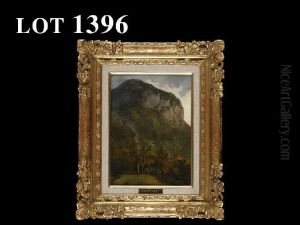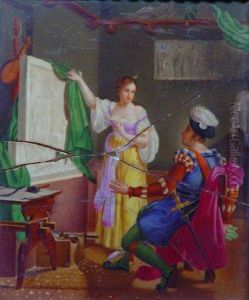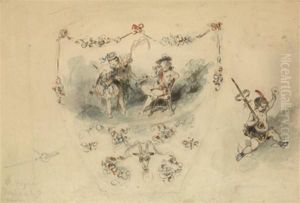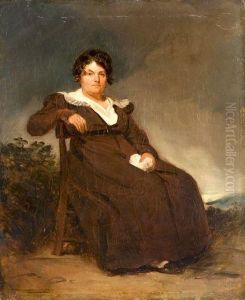Theophile Evariste Fragonard Paintings
Théophile Evariste Fragonard was a French painter and illustrator, not to be confused with his great-uncle Jean-Honoré Fragonard, who was a prominent Rococo painter. Born in Grasse, France, on April 14, 1806, Théophile Fragonard was part of a family with a rich artistic heritage. His father, Alexandre-Évariste Fragonard, was also a painter and sculptor, ensuring that Théophile was immersed in the arts from a young age.
Théophile Evariste Fragonard's career is less documented than that of his famous great-uncle, and his work did not achieve the same level of recognition. However, he did contribute to the world of art in 19th-century France. He studied under his father and possibly received informal guidance from other artists connected to his family. His artistic style was influenced by the Romantic movement, which was prevalent during his lifetime, and he produced works primarily in the medium of painting, though he was also known to work in illustration.
Despite the shadow cast by his great-uncle’s success, Théophile forged his own path. His works were exhibited in Paris Salons, where artists of the time would showcase their art to the public and potential patrons. Unfortunately, there is limited information on the specifics of his oeuvre or major works that would define his career.
Théophile Evariste Fragonard passed away on April 11, 1876, in Paris, France. While his legacy may not have had the enduring impact of other artists of the Romantic era or his great-uncle’s Rococo legacy, his contributions to French art of the period still hold historical significance. His life and work reflect the broader narrative of artists in the 19th century who navigated the challenging terrain of living up to a prominent family name while also trying to establish their own artistic identity.








